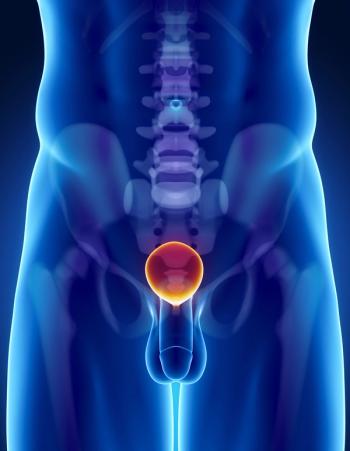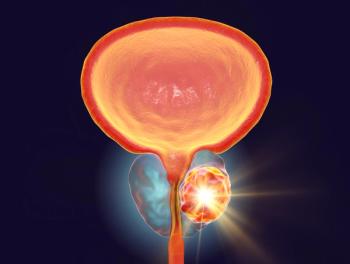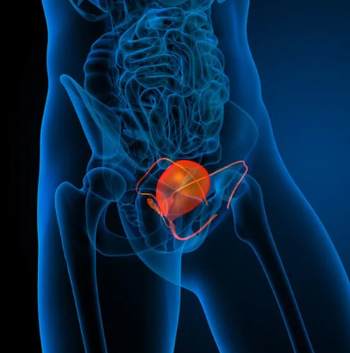
Oncology NEWS International
- Oncology NEWS International Vol 8 No 9
- Volume 8
- Issue 9
NIH Plan Quadruples Prostate Cancer Research Funds
BETHESDA, Md-The National Institutes of Health has unveiled a 5-year plan that, if fully funded, will nearly quadruple its total budget for prostate cancer research, from the $113.6 million spent in fiscal year 1998 to $420.1 million in FY 2003. NIH anticipates spending $180.3 million on researching the disease this fiscal year, the first year of the 5-year program, an increase of 58.7% over FY 1998.
BETHESDA, MdThe National Institutes of Health has unveiled a 5-year plan that, if fully funded, will nearly quadruple its total budget for prostate cancer research, from the $113.6 million spent in fiscal year 1998 to $420.1 million in FY 2003. NIH anticipates spending $180.3 million on researching the disease this fiscal year, the first year of the 5-year program, an increase of 58.7% over FY 1998.
Following this plan would ensure the development of new treatments, new preventives, and new interventions with the potential to improve, extend, or even save the lives of all men touched by prostate cancer, NIH said in a new report, Planning for Prostate Cancer Research.
NIH drafted its plan in response to several requests made by congressional committees. These included a description of current prostate cancer research activities and the formulation of a plan, based on the professional judgment of scientists, that would outline the research opportunities in prostate cancer over 5 years.
Despite advances over the past decade, our treatments for prostate cancer are inadequate, the side effects of treatment are unacceptable, and troubling questions remain about the relative benefit of early detection of the disease, the report said.
Seventy percent of the plans dollar amount is targeted at clinical or translational research, the report notedresearch that will have a direct impact on patients, survivors, and at-risk men.
An important goal is to ensure that every man with prostate cancer has access to participation in a clinical trial, NIH added. Other goals include pursuing the expanding understanding of prostate cancer at the molecular level to develop drugs that kill tumor cells but spare surrounding tissue, and to move new drugs from the laboratory to patients as speedily and efficiently as possible.
The increase in FY 1999 spending for prostate cancer research generally follows recommendations made in a report by NCIs Prostate Review Group, which was released last September. The future lines of research outlined by NIH in its new plan are based on our assessment of scientific opportunities over the next 5 years without regard to economic constraints or other competing priorities of the federal government, the report said.
Implementation
NCI has already begun implementing its national prostate cancer research program in three ways:
Linking current and potential prostate cancer researchers to a menu of new research initiatives, resources, and funding opportunities.
Modifying existing NCI initiatives to tailor them to the prioritized needs of the prostate cancer research community.
Creating new initiatives to fill in gaps in identified high priorities. Examples include a new mechanism to rapidly fund new clinical trials in prostate cancer and a new national prostate cancer tissue resource.
The NIH plan focuses primarily on activities of the National Cancer Institute, whose current budget of $141.5 million for prostate cancer research accounts for 78.5% of the total NIH allocation for the disease in FY 1999. That percentage would rise to 80.9% in 2003, if the NIH plan is fully funded.
However, the report also discusses prostate cancer-related activities at eight other NIH components: the National Institute of Diabetes and Digestive and Kidney Diseases (NIDDK), National Human Genome Research Institute, National Center for Research Resources, National Institute of Environmental Health Sciences, National Institute on Aging (NIA), National Institute of Nursing Research (NINR), National Institute of Mental Health (NIMH), and National Institute of Deafness and Other Communications Disorders.
The report summarizes a number of programs related to prostate cancer that are already underway, including NCIs Cancer Genome Anatomy Project; 246 NCI-sponsored clinical studies in 1997-1998, including 80 phase III trials; NIDDKs basic and clinical studies of prostate disorders; NIAs epidemiologic investigations of the diseases high prevalence in elderly men; NINRs research on symptom management following prostate cancer surgery, including incontinence and pain; and NIMHs studies of the effects of stress and emotion in men with prostate cancer.
The 5-year plan is a framework for research activities rather than a set of specific study requests. Our professional judgment report largely describes vehicles that the larger scientific, clinical, and industrial enterprise would fill with specific ideas, clinical trials, experiments, and technologies, the report noted. While some of the initiatives described here are not specific to prostate cancer, they are so relevant that we included them, expecting that they will help us answer important prostate cancer questions.
In the report, NCI laid out a series of clinical strategies that it plans to follow. A new program of research grants, called QuickTrials, aims to move new ideas for therapeutics into phase I and II clinical trials more rapidly and efficiently. NCIs goal is to double or triple the number of patients participating in these early clinical trials, which would include the testing of agents not previously used against prostate cancer.
NCIs cancer therapy evaluation program in prostate cancer will launch a series of drug-discovery studies that focus on molecular targets important to the cancer process. In FY 1999 alone, NCI expects to initiate about 35 new phase I and II trials to investigate promising targets and mechanisms at which to aim therapies. These include studies of angiogenesis, metastasis, growth factors and their receptors, and tissue-specific genes that are expressed in prostate cancer cells.
This year, NCI plans to begin several multicenter phase III prostate-cancer studies that will attempt to optimize hormonal and chemotherapeutic approaches for the most common clinical presentations. These include androgen-deprivation adjuvant therapies after prostatectomy and a comparison of the now-standard 8 weeks of preoperative androgen deprivation vs 28 weeks.
The NCI said that multicenter trials in the future will likely include chemotherapy for patients with androgen-independent disease and a comparison of prostatectomy vs brachytherapy in patients with newly diagnosed localized tumors of normal risk.
In addition, the report said, NCI is re-engineering its clinical trials program and that it will test new systems for identifying the best trials, improving trial planning, speeding trial activation, and improving the availability of trials to patients throughout the country. Prostate and lung cancers will serve as the primary diseases for testing the Institutes new planning and access efforts.
As part of the restructuring of its clinical trials program, NCI is developing a national cancer informatics operation to improve the linkage, transfer, and analysis of the cancer-related biomedical information. The Institute is currently working with CapCure, a national prostate cancer group, to develop a consensus terminology for prostate cancer.
A key effort by NCI will seek to determine whether early detection affects mortality and whether routine screening of asymptomatic men carries a net benefit. It also aims to identify the effects of early detection on morbidity, mortality, and patients quality of life.
NCI anticipates increasing the number of investigations of image-guided therapeutics, which combine high-tech imaging techniques with high-performance computers to deliver radiation or chemotherapy precisely to a tumor (see News in Brief, p. 4). These methods hold great potential for minimizing surgical trauma, shortening recovery time, and reducing health costs, the report noted.
NCI also envisions a series of new prostate cancer prevention trials, ranging from small proof-of-principle investigations to large-scale studies in the general population. The time is ripe for evaluating a growing list of promising chemopre-ventive agents, the report said. These agents include pro-apoptotics, signal transducers, antiangiogenics, isoflavones, differentiating agents, rational combinations (such as antiandrogens with selenium), and gene therapy.
Articles in this issue
over 26 years ago
‘Gonzalez Diet’ to Be Tested in Pancreatic Cancerover 26 years ago
Talking to Members of Congress About Cancer Issuesover 26 years ago
Modified SPECT Scintimammography Proves More Accurateover 26 years ago
Lilly Enjoined From Promoting Evista for Breast Cancer Preventionover 26 years ago
Experts Brief Capitol Hill on Trial Costs Surveyover 26 years ago
Gabapentin as Adjuvant to Opioids in Neuropathic Painover 26 years ago
Biochemotherapy May Be an Option in Metastatic Melanomaover 26 years ago
PET Scans Spare Some NSCLC Patients From Mediastinoscopyover 26 years ago
Computer Technique Gives New Life to Thermal Breast Imagingover 26 years ago
Kytril Indicated to Prevent RT-Induced Nausea and VomitingNewsletter
Stay up to date on recent advances in the multidisciplinary approach to cancer.

















































































